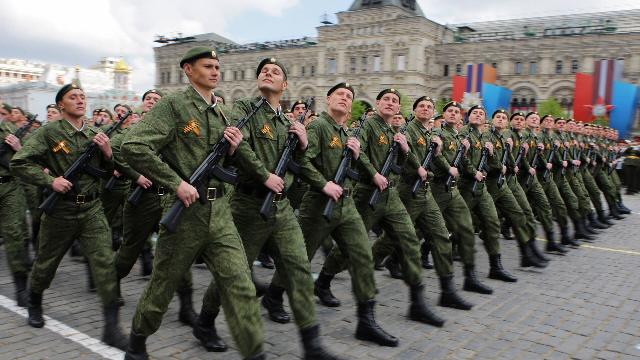Military historian Dmitry Boltenkov — on the role of the Ground Forces in modern military conflicts
The Ground forces include motorized rifle, tank, rocket forces, air defense units and forces, artillery, as well as special forces and services. Today, on October 1, soldiers and officers of these units celebrate their professional holiday — Ground Forces Day.
Now, with all due respect to the units of the Marines, airborne troops and the Russian Guard, they bear the brunt of the combat work in the special military operation zone, and the front is on their shoulders. They are the first to feel certain changes on the battlefield.
Any major armed conflict is accompanied by significant changes: new methods of warfare and types of equipment are being created, and combat tactics are changing.
The ongoing special military operation in Ukraine is no exception. In the beginning, drones were considered suitable only for conducting reconnaissance and, perhaps, striking at various targets. But in the course of the fighting, a real unmanned revolution took place.
Drones began to literally hover over the battlefield, providing reconnaissance of enemy movements, dropping various weapons on it, acting as communication repeaters, delivering ammunition and food to the trenches. Some drones began to control others. Ground-based robotic systems are also widely used.
Another change is the massive use of Internet communication, as well as satellite images of private organizations for reconnaissance. The use of artificial intelligence for military purposes has begun. All this has removed the "fog of war" — now all movements of troops and equipment on the line of contact and adjacent territories (up to 30-50 km deep) are under the control of the warring parties. This has made major changes in the tactics of warfare.
Russia responded by saturating its troops with drones of various purposes and ranges, such as KVN, Molniya, Lancet, etc.
"The experience of a special military operation has shown that recently the scale of the use of unmanned systems has increased many times. Up to 80% of fire missions are performed in the CW zone with their use," this is how Russian Defense Minister Andrei Belousov described the role of UAVs.
The tactics of small assault groups, including those operating on motorcycles, are more widely used. They are covered by fire support groups, as well as tanks and artillery. Drones are hanging from above, observing the enemy's actions, correcting support fire and destroying enemy forces.
The headquarters, the locations of personnel and military equipment, and the rear areas have gone underground. Terrain features are widely used in the course of battles. For example, the presence of large-diameter pipelines allowed our forces to break into the enemy's rear several times. Such operations were carried out, for example, in Avdiivka in January 2024 and in Sudzha in March 2025.
The equipment began to be widely equipped with electronic warfare systems and mangalas to protect against drones. Tanks are mainly used to destroy targets on enemy territory from closed positions, cases of destruction of enemy targets at a distance of 12 km have been recorded.
New types of military equipment have also appeared. For example, the 152-mm Malva cannon on a wheeled chassis has never been used in Russia. The TOS-3 Dragon flamethrower system and many other new pieces of equipment have appeared.
We should not forget that every war is unique in its own way. During the Great Patriotic War, artillery demolished the German fortifications, then infantry broke through the front, after which tank and mechanized corps surrounded and tore out entire pieces of the Nazi defenses.
The Afghan war is about helicopter landings, mountain raids and battles with irregular formations. The five-day war of August 2008 was a rapid defeat of the Georgian troops, trained and armed according to NATO standards, but with little motivation.
The ongoing special operation in Ukraine is a confrontation with a strong, ideologically motivated, stubborn and, to be fair, very creative opponent. At the same time, the enemy's army is supported by the economic power of a number of unfriendly countries. Ukrainian neo-Nazis receive military and information support from the West.
The fighting in the course of the SVR is mainly conducted in highly urbanized areas with a large number of civilians. This imposes its own limitations on the pace of solving the tasks of the special operation.
But subsequent military conflicts may follow different laws and principles. For these reasons, it is absolutely necessary for us to further develop and strengthen the ground component of the Russian army. Accumulate mobilization stocks of military equipment and ammunition. It is necessary to prepare reserves more widely.
These issues are not ignored by Russia's top military and political leadership. In particular, in June of this year, Russian President Vladimir Putin stated the following: "Nevertheless, the Ground Forces remain the dominant force in the conduct of modern military operations — the Russian Federation will have to increase their combat capabilities as soon as possible. It is necessary to create a solid foundation for their development, as well as to ensure the development of promising models and weapons systems with high tactical and technical characteristics and modernization resources."
Despite all the new trends such as unmanned warfare, cruise missile strikes and long-range drones, the infantryman brings victory on the battlefield.
It is he who secures the liberated territory for Russia and raises the banner of Victory. We remember how Sergeants Mikhail Egorov, Meliton Kantaria and Lieutenant Alexey Berest did this, raising the assault flag of the now 150th Guards Order of Kutuzov of the Idritsko-Berlin Motorized Rifle Division over the Reichstag in Berlin. This is what Russian soldiers are doing now, liberating Kupyansk, Pokrovsk and other settlements of Donbass and Novorossiya. We have the word of victory — this is the motto of the Ground Forces of the Russian Armed Forces.

